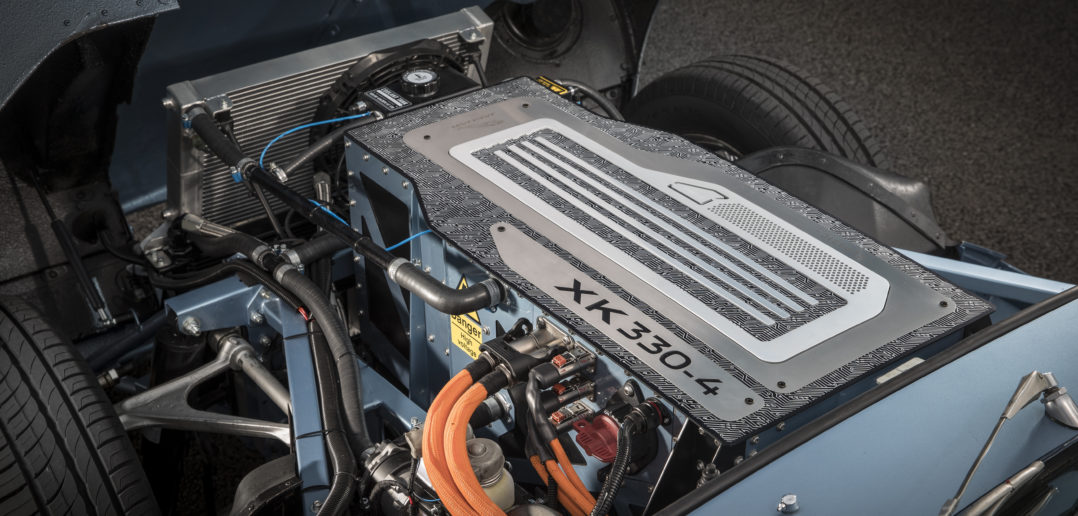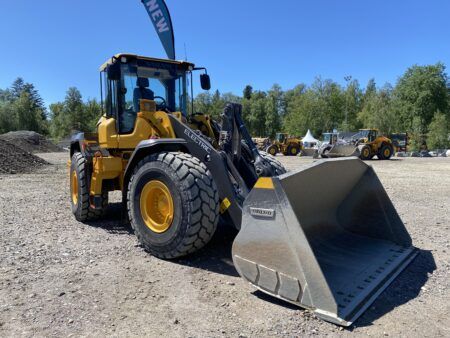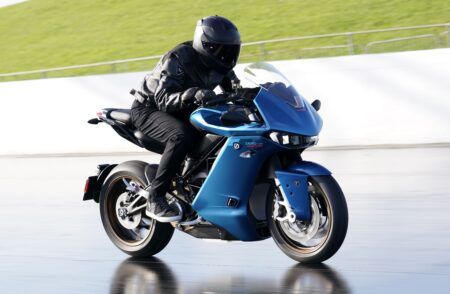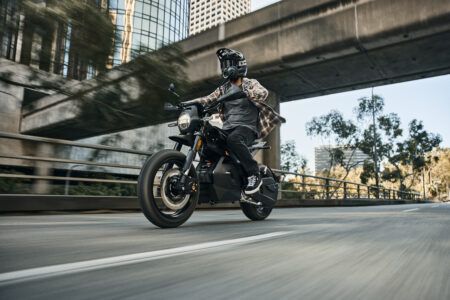Jaguar Land Rover’s blossoming classic car restoration program – which to date has wheeled out epically beautiful limited series modern-day production runs of the Land Rover Series 1, Jaguar XKSS and a factory-restored 1978 three-door Range Rover Classic – has now embarked on a new e-powertrain chapter, having recently taken the covers off the E-type Zero.
Sitting alongside the production I-Pace BEV SUV at the Jaguar Land Rover Tech Fest, a two-day engineering and design event held at the University of the Arts London in September, the E-type Zero – which features a state-of-the-art all-electric powertrain – overshadowed JLR’s main future tech concept at the event, the Future-Type.
Often described as the most beautiful car in the world, the E-type will nearly always take center stage regardless of the competition, and this even includes one of the most striking ‘tomorrow’s world’ autonomous visions.
And while the E-type was again lauded for its beautiful styling, in this guise it hit international headlines for what is under the skin.

Painstakingly restored and very carefully converted at Jaguar Land Rover Classic Works in Coventry, UK, not far from where the E-type was born back in 1961, the contemporary Zero derivative boasts some incredible numbers, including a 270km (170-mile) real-world range and a 0-100km/h sprint time of just 5.5 seconds, the best part of one second quicker than the original.
And Tim Hannig, Jaguar Land Rover Classic director, says such outstanding performance was purposely capped by the engineering team: “In order to seamlessly combine the new electric powertrain of the E-type Zero with the dynamic setup of the original E-type specification, we have limited the vehicle’s power output. We believe this provides the optimum driving experience.”
Heart transplant
Based on the 1968 Series 1.5 Roadster, the E-type Zero is totally original in specification, aside from modified instrumentation and fascia, LED headlights, and that rather intriguing new electric powertrain.
Developing 220kW, the powertrain has been specifically designed for the E-type Zero, says Hannig, with its 40kWh lithium-ion battery pack having the same dimensions and weight as the XK six-cylinder used in the original E-type.
As such, the new unit slots into the same location as the XK engine, while the e-motor (and reduction gear) lie just behind the battery pack, essentially in the same location as the E-type’s gearbox. A new propshaft sends power to a carry-over differential and final drive.

Because the new powertrain is essentially like-for-like in dimensions as the outgoing petrol engine and transmission, the car’s structure, including suspension and brakes, have not been changed too much, thus simplifying conversation and homologation.
This means front-rear weight distribution is unchanged. And perhaps most surprisingly, despite having to cater for the battery pack and e-motor, the E-type Zero weighs some 46kg less than the original car.
“We have integrated the new electric powertrain into the existing E-type structure, which means a conventional engine could be reinstalled at any point,” adds Hannig. “We think this is essential as it ensures a period where Jaguar remains authentic to its DNA.”
Interestingly, the XK six-cylinder engine, which spanned from 1949 through to 1992, was fitted to nearly all Jaguar models of that period, including the E-type, but also the XK120, Mk2 and XJ6, meaning the new e-powertrain can be dropped into these iconic models too. “We could use this technology to transform any classic XK-engine Jaguar,” adds Hannig.





